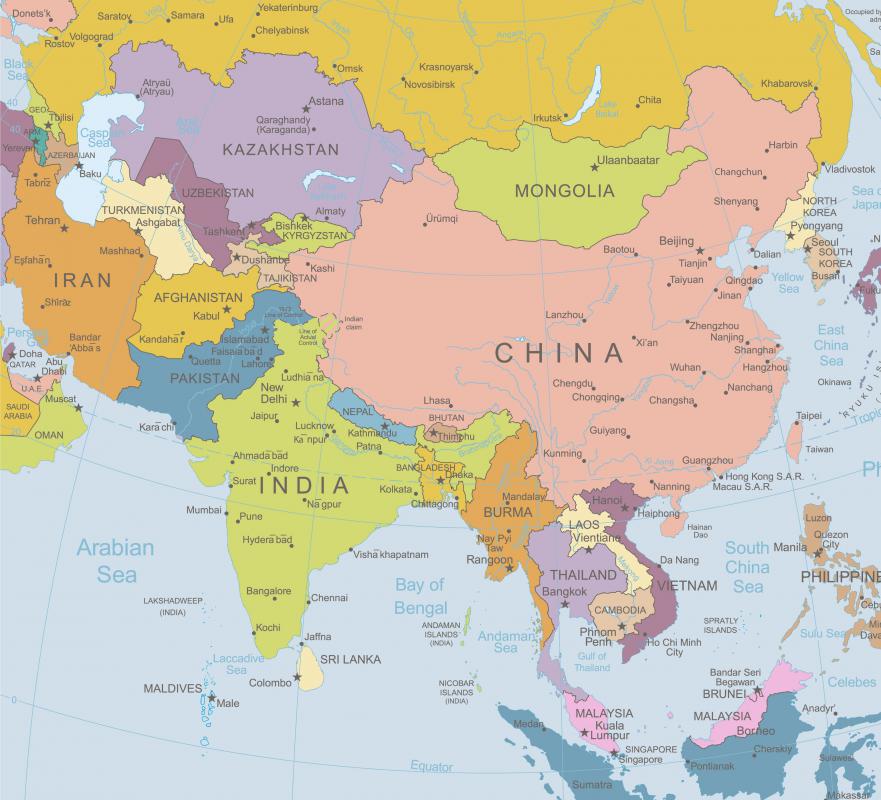At WiseGEEK, we're committed to delivering accurate, trustworthy information. Our expert-authored content is rigorously fact-checked and sourced from credible authorities. Discover how we uphold the highest standards in providing you with reliable knowledge.
What is Avian Flu?
An avian flu virus is any flu virus that spreads among birds, especially domestic chickens, and can result in substantial economic losses and outbreak concerns. Between 1918 and 1919, the Spanish flu virus, a mutated variant of the H1N1 avian flu virus, caused the death of between 50 and 100 million humans worldwide in a single year. A large outbreak of the H5N1 avian flu in southeast Asia in 2005 caused the destruction of millions of chickens and international concern about the possibility of the virus mutating into a human-transmissible form. This has not yet occurred, but there is a constant worry that it will, leading to a possible repeat of the 1918 disaster.
Avian flu is caused by Influenza A virus, the only species in the viral genus called Influenzavirus A. This genus is one of five that makes up the viral family Orthomyxoviridae, which includes all influenza viruses. Avian flu is technically what the virus is called only when it is infecting birds – when spread to other animals, it is alternatively known as Human Flu, Swine Flu, Horse Flu, Dog Flu, and so on.

The Influenza A virus, the organism behind avian flu, stores its genetic information in eight linear segments of RNA, which code for as many as eleven proteins. Its genetic information can recombine within infected host cells to produce new strains. Certain antiviral drugs can become obsolete within a mere decade as a result of this continuous mutation. During any given flu season or flu pandemic, a flu virus reproduces millions of trillions of times, leaving much room for variation and natural selection.

H5N1, the current strain of avian flu that is a threat, has spread from chickens to humans in about a hundred instances in southeast Asia since the virus emerged there. No human-to-human transmission has ever happened, and the only people infected are those who have had close exposure to many chickens and their viral manure. However, as many as half of those infected have died. When chicken meat is cooked thoroughly, it will not spread the disease, though this did not prevent the destruction of millions of chickens when the disease was suspected among them. In recent years, the avian flu has been a topic of political discussion in the United States and elsewhere, with several major governments stockpiling medicines for treating the disease and formulating strategies to confront a future outbreak.
AS FEATURED ON:
AS FEATURED ON:












Discussion Comments
@literally45-- Yes, this is one of the reasons why some people think that the US should stop trading with China and should not accept Chinese migrants. A few cases of Avian flu have made it across the border this way.
I understand the concern but I don't think we can or should cut all ties with one of the fastest growing economies in the world. We need to take other precautions when it comes to Avian flu.
@candyquilt-- I'm not sure about that. I can't remember. You may be right but neither of us are experts.
I do know that there is growing concern about H7N9 Avian flu from China. A new variant of Avian flu as of 2014. There are more than one hundred types of influenza A in the world, to which Avian flu belongs. And the viruses keep mutating and updating themselves. So we literally have one or two more versions of Avian flu to add to the list. These usually occur in birds only but it's not impossible for them to transmit to humans. It's already happened before obviously and it can happen again.
I thought that Avian flu in 2015 did transmit to humans. Isn't that why chickens, birds and duck in many countries were destroyed to prevent more people from being infected?
I was in the Balkans around that time and I specifically remember a few people being hospitalized due to Avian flu. They survived but it was determined that they lived on farms and regularly dealt with chickens. So chicken in those areas were gathered and killed.
Post your comments